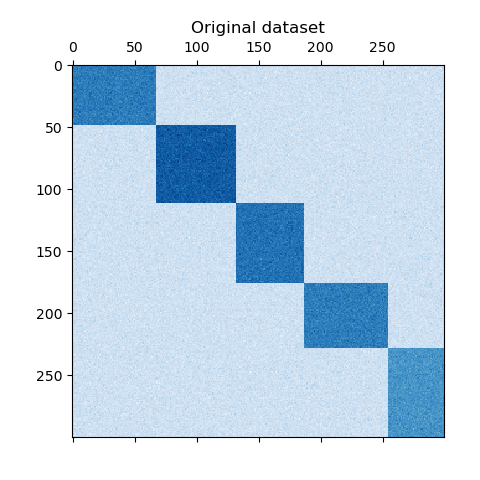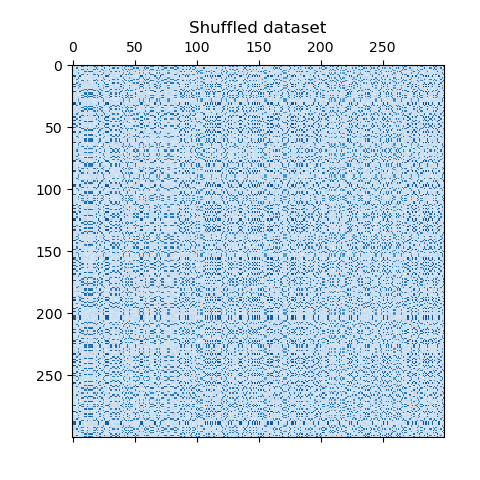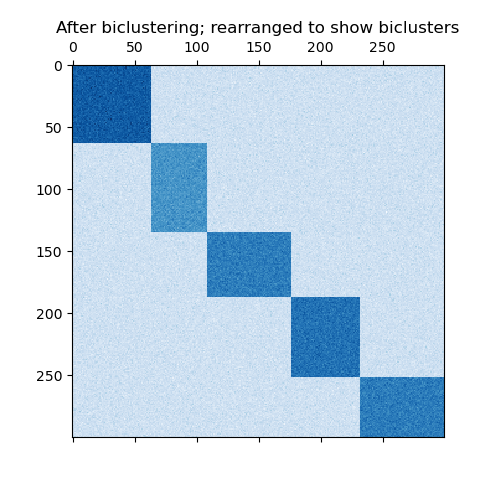W3cubDocs
/scikit-learnA demo of the Spectral Co-Clustering algorithm
This example demonstrates how to generate a dataset and bicluster it using the Spectral Co-Clustering algorithm.
The dataset is generated using the make_biclusters function, which creates a matrix of small values and implants bicluster with large values. The rows and columns are then shuffled and passed to the Spectral Co-Clustering algorithm. Rearranging the shuffled matrix to make biclusters contiguous shows how accurately the algorithm found the biclusters.
Out:
consensus score: 1.000
print(__doc__) # Author: Kemal Eren <[email protected]> # License: BSD 3 clause import numpy as np from matplotlib import pyplot as plt from sklearn.datasets import make_biclusters from sklearn.datasets import samples_generator as sg from sklearn.cluster.bicluster import SpectralCoclustering from sklearn.metrics import consensus_score data, rows, columns = make_biclusters( shape=(300, 300), n_clusters=5, noise=5, shuffle=False, random_state=0) plt.matshow(data, cmap=plt.cm.Blues) plt.title("Original dataset") data, row_idx, col_idx = sg._shuffle(data, random_state=0) plt.matshow(data, cmap=plt.cm.Blues) plt.title("Shuffled dataset") model = SpectralCoclustering(n_clusters=5, random_state=0) model.fit(data) score = consensus_score(model.biclusters_, (rows[:, row_idx], columns[:, col_idx])) print("consensus score: {:.3f}".format(score)) fit_data = data[np.argsort(model.row_labels_)] fit_data = fit_data[:, np.argsort(model.column_labels_)] plt.matshow(fit_data, cmap=plt.cm.Blues) plt.title("After biclustering; rearranged to show biclusters") plt.show()
Total running time of the script: (0 minutes 0.219 seconds)
Download Python source code:
plot_spectral_coclustering.py
Download IPython notebook:
plot_spectral_coclustering.ipynb
© 2007–2016 The scikit-learn developers
Licensed under the 3-clause BSD License.
http://scikit-learn.org/stable/auto_examples/bicluster/plot_spectral_coclustering.html


